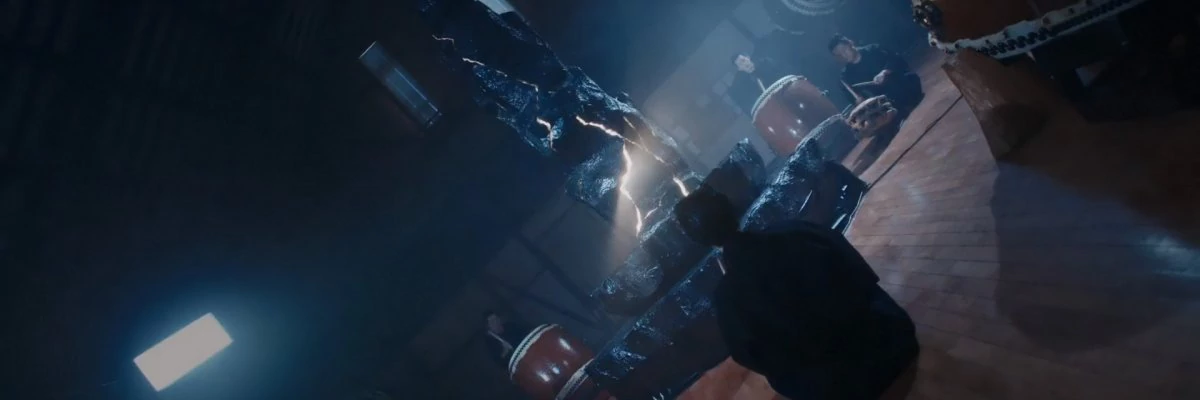Shiver
Movie details

Keeping up with Toshiaki Toyoda's films is traditionally not an easy thing to do, so when I got access to his latest project I jumped at the opportunity. Mind you, it's not a traditional narrative (not even an experimental one for that matter), instead Shiver [Senritsu Seshimeyo] is Toyoda's take on the album film/visual album, a symbiosis of musical compositions, visuals and narrative that tries to be something distinct while at the same time elevating each of its components. I had absolutely no idea what to expect when I started this film, but came out completely transfixed. This film isn't going to be for everyone, but it sure as hell deserves all the exposition it can get.

Before I go on, I would like to make it clear that the director gave me free access to his film. It's only the second time I was given a review copy and both times I've made no commitment to write a full review (as most of you know, I only do that for films I rate 4* or higher), nor did I ever feel pressure to inflate the score. I do feel it's necessary to disclose that I ended up reviewing something that was given to me for free. I realize this is a common practice for professional review outlets, but since I've personally experienced the doubt that can cast over a review, I'd rather be as transparent as possible about this.
Album films are quickly gaining in popularity, so it's nice to see seasoned directors having a crack at it. Especially someone like Toyoda, who has always paid above average attention to the soundtracks in his films. The difference between Shiver and most other album films I've seen is that this project was conceived as a singular project from the very start, rather than as a companion piece to a pre-existing album. Toyoda rounded up the composers and performers, went to Sado Island, spent the next month working on this project and returned with what is now known as Shiver. No doubt this process helped make it a more consistent experience.
The music is a unique collaboration between Koshiro Hino and Kodo (Taiko Performing Arts Ensemble). It's always nice to see artists from different niches draw inspiration from each other, and I have to say it really paid off here. I hadn't heard of either before (I assume that will be the case for most people watching this film), and I probably wouldn't have sought out their music on my own, but together the created something truly spectacular. Add to that Toyoda's beautiful visuals, and you have a film that lives up to the aspirations of an album film.

Album films are still trying to find the right balance between audio, visuals and narrative. Some of them feel like a string of loosely connected music videos, others are set up as veritable anthology films, even others appear more like narrative features with some songs edged in between. The synergy between audio and video is another thing that can greatly vary between projects. Shiver is one of the first album films I've seen that feels quite cohesive. It's no doubt because this project was set up as an album film from the start, so it's not just some elongated music video, nor a mere experimental feature with a coherent soundtrack. In that sense, it reminded me a lot of Umfeld.
While the music is purely instrumental and Toyoda could've easily relied on the editing to do most of the heavy lifting, the visuals don't just reflect on a single song, but emphasize the build-up of the music throughout the film. Personally, I would've liked to see a bit more synergy between the editing and the music, especially since it's very rhythmic. The finale, the only part where the editing gets pretty intense, illustrates this perfectly, and it's easily my favorite part of the film. Then again I'm a big fan of hyper editing and I have to admit that I'm even more in awe of the approach Toyoda ended up taking, as it's a lot harder to create a natural rhythm over the course of 90 minutes than cut up and glue together visuals to the rhythms of individual songs. So props for not taking the easy route there.
The music itself is quite an experience too. The instrumentation is pretty minimal, but because the artists are each committing to slightly different rhythms (and because some instruments are truly monumental, i.e. the taeko drums) the effect is erratic and epic. If the music takes a hold of you then the experience becomes very trance-like, letting you drift along on minor rhythmic variations, while shaking you awake by introducing more sudden rhythmic changes. I don't think it's music that would work well on its own for me, but as part of this film it's truly stunning.

Most of the film consists of footage from the performers, but Toyoda also mixes in elements of Japanese tradition and folklore. I have to admit that my knowledge of Japanese history and culture wasn't sufficient to make anything specific of it. I'm sure there's some kind of narrative that can be extracted from these scenes, but even if you're like me, and you lack the proper cultural background these scenes serve as a rich and fitting dose of couleur locale. Add the smart use of ambient sounds (the icing on the cake) and you have a wonderfully balanced whole.
On paper Shiver looks like a film for a very specific audience in mind, but I think Toyoda's direction elevates it beyond its intended niche. Sure enough, it helps if you're used to non-narrative cinema and an affinity for minimal/rhythmic music is definitely a plus, but Shiver isn't some super obscure niche project that will only appeal to taeko fans with a taste for the abstract. It's an extremely well-balanced album film, where the entrancing music and stylish visuals feed off each other, combining into an invigorating and encompassing experience. Toyoda, Hino and Kodo delivered a landmark in the genre, though I'm afraid this will once again be a film that won't get the praise it deserves.